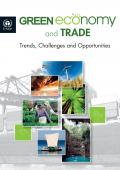This book commences with a broad overview of Indonesia’s development since the 1960s. The analytical frameworks for the study, which were developed at Harvard University and ADB, are then used in an attempt to identify the constraints that most severely bind the country’s development, and therefore the priorities for policy implementation and/or reform. The country’s macroeconomic management and monetary policy since the Asian financial crisis is reviewed. The challenges of Indonesia’s slow industrial transformation and small industry sector are described, as are their implications for poverty reduction efforts. The challenges Indonesia faces in developing its infrastructure are set out, e.g., the country’s diverse topography, archipelagic nature, and monopolies. Human capital, an essential element in both growth and poverty reduction, is analysed for the country, including the improvements in enrolments and gender balance, and the limitations the poor face to accessing education. Indonesia’s record on poverty reduction is traced, as are the efforts to improve it.
This new report reveals, for the first time, data on resource use and resource efficiency for all countries of the world over three decades, from 1980 – 2008. The data covers the global, continental and country level, featuring illustrative case studies. The report evaluates the performances of different countries, highlighting the critical issues of current trends in resource use.
The report addresses three main issues:
1. Patterns of material extraction, trade, consumption and resource productivity in different world regions and countries;
2. Connections between material use and indicators of economic and social development;
3. Links between material use and selected major environmental problems, such as carbon emissions, land use change and water use.
This document shows that increased industrial energy efficiency is one of the most promising routes to sustainable industrial development worldwide, particularly in developing countries. Industry remains among the most energy-intensive sectors: its contribution to global GDP is lower than its global share of energy consumption. Industrial processes have an estimated technical efficiency potential of 25–30 per cent. That means that adopting best available technologies and related business and engineering practices could eventually enable industry to lower emissions of greenhouse gases and combat climate change and also reduce other pollutants. The energy savings could be redirected to meeting social needs for access to energy, particularly acute in developing countries, and could help companies everywhere to improve their bottom line.
This report identifies the broad range of policy measures required by national or federal governments to promote and facilitate the greening of industries. It has been prepared as part of the United Nations Industrial Development Organization (UNIDO) Green Industry initiative, which focuses on ways that developing countries can green their industries and accelerate growth in their environmental goods and services sector. One of the key objectives of the initiative is assessing the effectiveness of governments in developing countries in supporting the greening of their industries through national strategies, policies and integrated governance structures.

